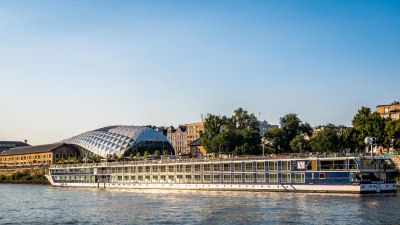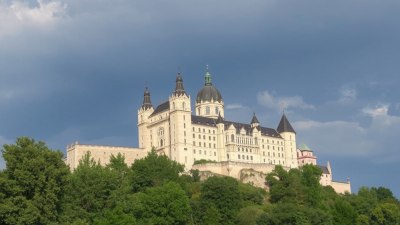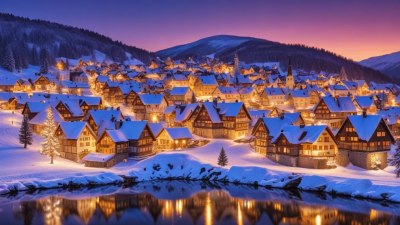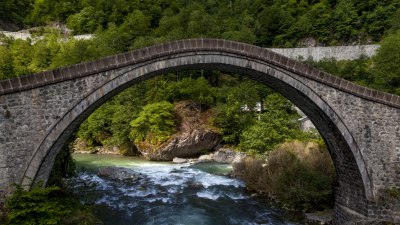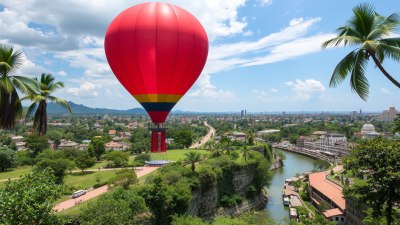The Clock Tower in Jaffa, Israel Ticks in Three Languages
Explore the history and significance of Jaffa's iconic clock tower, a symbol of cultural unity.
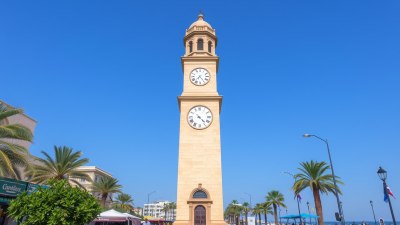
Image created with Flux Schnell
The Clock Tower in Jaffa is not just a timekeeping structure; it is a monument that tells a story of cultural amalgamation and historical significance in Israel. Standing tall and proud in the bustling marketplace, this stunning edifice serves as a reminder of Jaffa's rich past and its role as a meeting point for diverse communities.
Constructed in the early 20th century, the Clock Tower was commissioned by the Ottoman Empire as a tribute to the Sultan, Abdul Hamid II. This iconic structure was completed in 1901 and has since become an emblematic landmark of the city, each hour echoing the sounds of time in three different languages: Arabic, Hebrew, and English. The tower signifies a unique blend of Eastern and Western cultures, reflecting Jaffa’s history as a crossroads of civilizations.
Historical Background
The history of the Clock Tower is intertwined with the broader narrative of Jaffa itself, which is one of the oldest ports in the world, dating back more than 4,000 years. Jaffa has historically served as a gateway for trade, migration, and cultures. Each community that has inhabited Jaffa has left its indelible mark on the city, contributing to its unique character.
During the Ottoman period, Jaffa flourished as a commercial hub, and the establishment of a clock tower was seen as a modern upgrade to the city’s infrastructure. At the time, cities with clock towers were considered progressive, and Jaffa aimed to showcase its modernization through this architectural endeavor.
Architectural Features
The design of the Clock Tower is a beautiful fusion of neo-Moresque and neo-Romanesque architectural styles. It stands at a height of 20 meters and is adorned with intricate mosaics and tiles that reflect the Islamic architectural heritage. The structure is crowned with a dome that adds to its majestic appearance, while its four clock faces are designed to be visible from all directions, ensuring that the residents and visitors of Jaffa can keep track of time.
Each clock face displays the time in the three languages, showcasing the multicultural essence of the city and serving as a practical tool for the diverse populations that call Jaffa home. This feature of the clock tower has made it a significant symbol of unity and coexistence.
The Cultural Significance
The Clock Tower has not only served as a timekeeping device but has also become a vital cultural symbol for the people of Jaffa and the wider Israeli community. It stands as a testament to the shared history of Jews, Arabs, and Christians who have lived in proximity to one another for centuries.
The languages represented on the clock face highlight the multilingual heritage of the city. The presence of Arabic signifies the Arab heritage that permeates the culture of Jaffa, while Hebrew reflects the Jewish connection to this land. English was also included, as Jaffa became a focal point for international trade and tourism, emphasizing the city's importance on the global stage.
The Clock Tower Today
Today, the Clock Tower remains a popular tourist attraction, drawing visitors from around the world eager to explore its historical significance and architectural beauty. Surrounding the tower, the vibrant streets of Jaffa are filled with art galleries, cafes, and markets that celebrate the local spirit and offer a taste of the rich culinary landscape.
The area also hosts numerous cultural events and festivals that bring the community together, fostering a sense of belonging and solidarity among the various groups that inhabit the city. The Clock Tower stands at the heart of these celebrations, symbolizing hope and unity in a region often marked by division.
As the Clock Tower in Jaffa tick-tocks away, it not only marks the passage of time but also encapsulates the essence of a city steeped in history and multicultural richness. It serves as a reminder of the importance of coexistence and dialogue among diverse communities.
This iconic structure, with its clocks broadcasting the time in three languages, continues to inspire pride among locals and awe among visitors, ensuring that the legacy of Jaffa and its people lives on.

